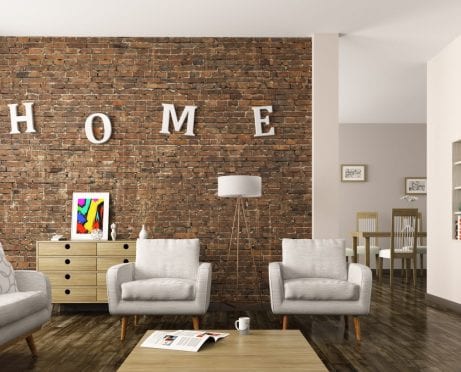
 I purchased my first home in 2007, at the height of the housing boom in the D.C. metro area. It needed a complete overhaul and, naturally, was priced $70,000 lower than its appraised value.
I purchased my first home in 2007, at the height of the housing boom in the D.C. metro area. It needed a complete overhaul and, naturally, was priced $70,000 lower than its appraised value.
Living in the ‘After' of the Housing Bubble Pop
The week after we closed, the bubble popped, and housing prices started falling. We felt good about our $249,000 purchase, knowing that our home sat on a third of an acre in suburban Maryland, where most home prices were starting at $320,000. Another positive was that we bought at a time that we did not need to put any money down on our house.
We had about $10,000 saved that immediately went to a new furnace and central air conditioning.
The house had two and a half bathrooms, one which was completely inoperable. All of the windows were original to its 1968 construction.
Two of them were broken, and all were being held up by window air conditioning units. The walls were dirty and the parquet peel-and-stick floors were coming apart. All of the appliances were gas, and evidently, in the late ’60s, the builders would just solder the pipes directly to the appliance – washer, oven, water heater…
So when it came time to replace these things, which had to happen in our first month, we had to include the cost of shut-off valves, lest the house exploded!
Get Homeowner’s Insurance From a Top Provider — Free Quote Here >>
We completed a few things on our own, like putting down tile in the laundry room, installing a new sink, and getting new flooring in the half bath. We did all of the painting. Then we paid a handyman to knock out a wall and install recessed lighting in the kitchen.
Using Loans to Your Advantage
In addition, we also researched housing rehabilitation loans. After two years of trying, we were finally approved for a loan under the 203(k) renovation loan program. This loan is a Federal Housing Administration (FHA) loan. You can use to cover renovations that will increase the value of your home.
Since we needed the entire kitchen and two bathrooms done, we were prime candidates, though we were only allowed to use approved contractors. We got our kitchen and bathrooms done; all 12 windows replaced; a new sliding patio door; and a new door from the garage to the outside installed – all in for $25,000.
Get a Free Quote for a Home Improvement Loan in Minutes — Visit Site >>
Our $250,000 mortgage on the house was granted at three percent interest for five years. The house was appraised at $320,000 at the time. Today, it has a market value of $350,000.
There were a lot of offers put in on the house the one day it came on the market. Most of the offers were well under the asking price, which was exactly what we offered. Our agent tried to convince us that if we really wanted the house, we should offer more.
But we knew what we could afford and stood our ground. Our offer was the only one that even came close to the asking price.
Housing markets change constantly, but a good location can be a good foundation for your desired home, even if it needs sweat equity. This house was located in Charles County, Maryland. At the time, we had no idea that it would become one of the top 50 wealthiest cities in the U.S. We bought the house because we liked the schools, and because the neighborhood seemed safe for our two children. The home stood on a large lot at the end of a secluded cul-de-sac.
Sometimes you don't come out even, and that's okay. When you add the renovations that allowed us to have what we wanted in the house, the stress of wondering if we did the right thing was erased.
And when my now ex-husband and I divorced seven years later, we were able to short-sale our house for only $25,000 under what we owed.
But because of the large amount of equity that we had in the house, our equity was not entirely wiped out when the market went down. When we sold our house, we owed $245,000 and sold it for $220,000. I believe that number was a big reason our bank agreed to the loss, considering that most homes in that area were over $100,000 underwater.
We survived the housing bubble. Unfortunately, our marriage didn’t – but that’s another story.










